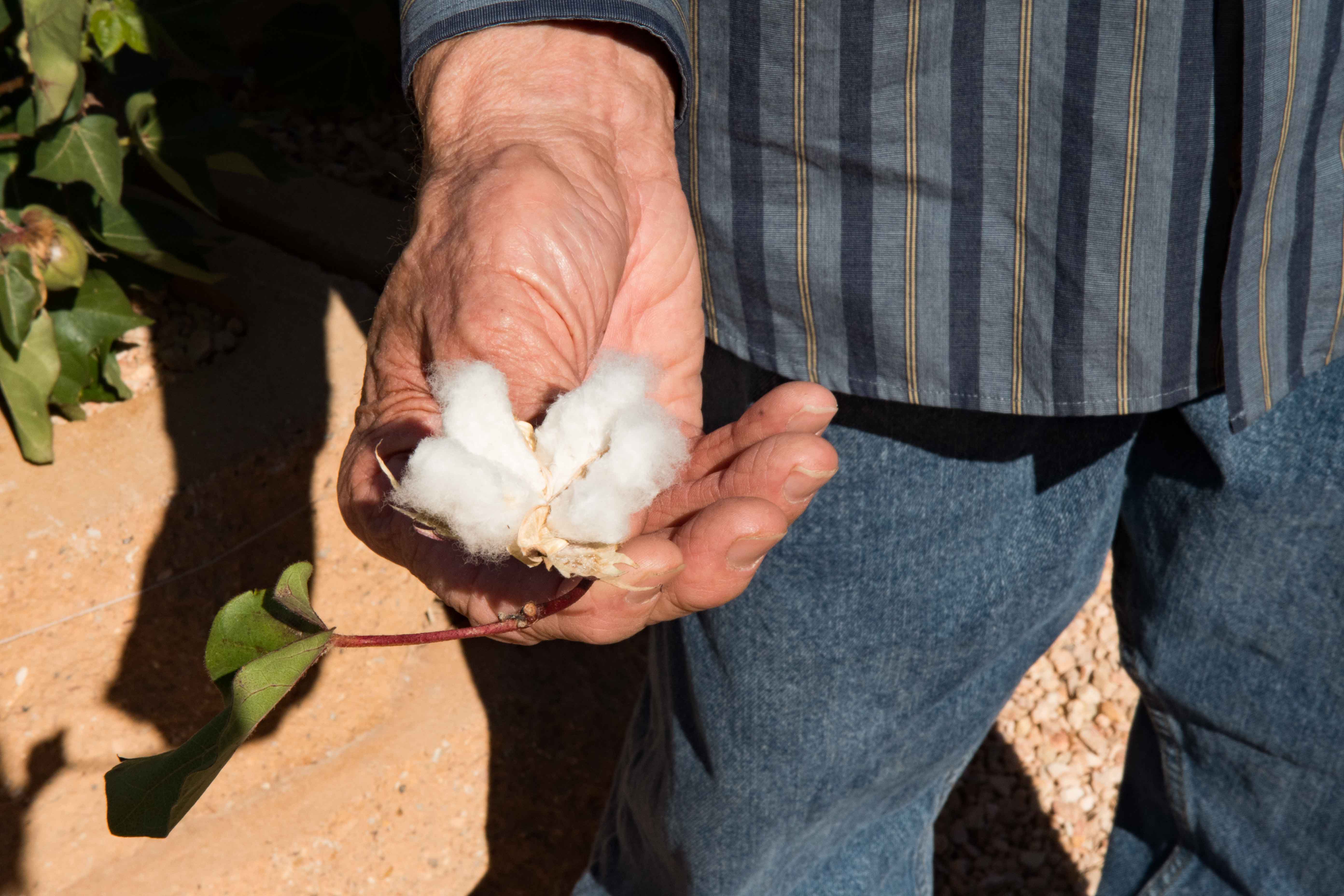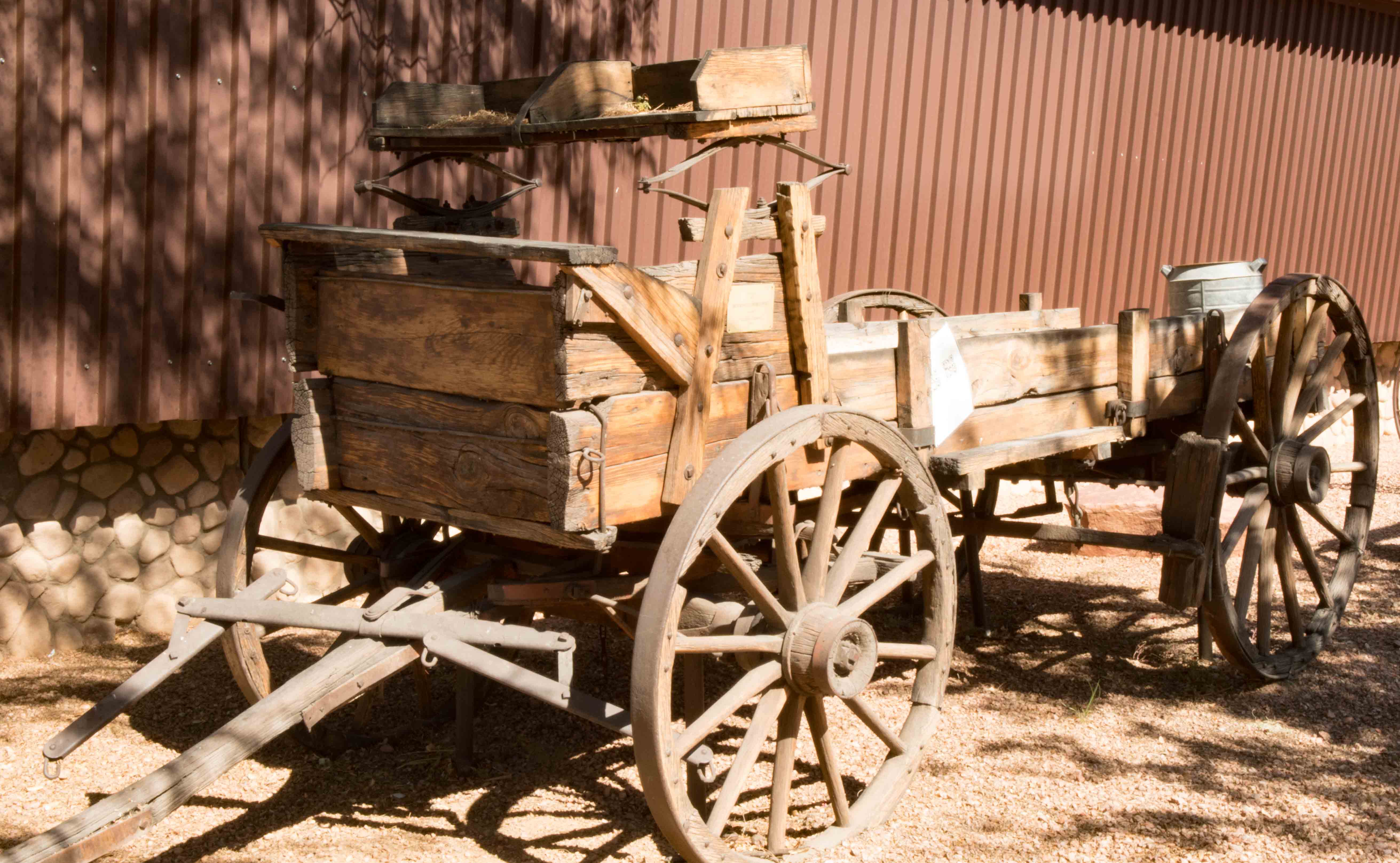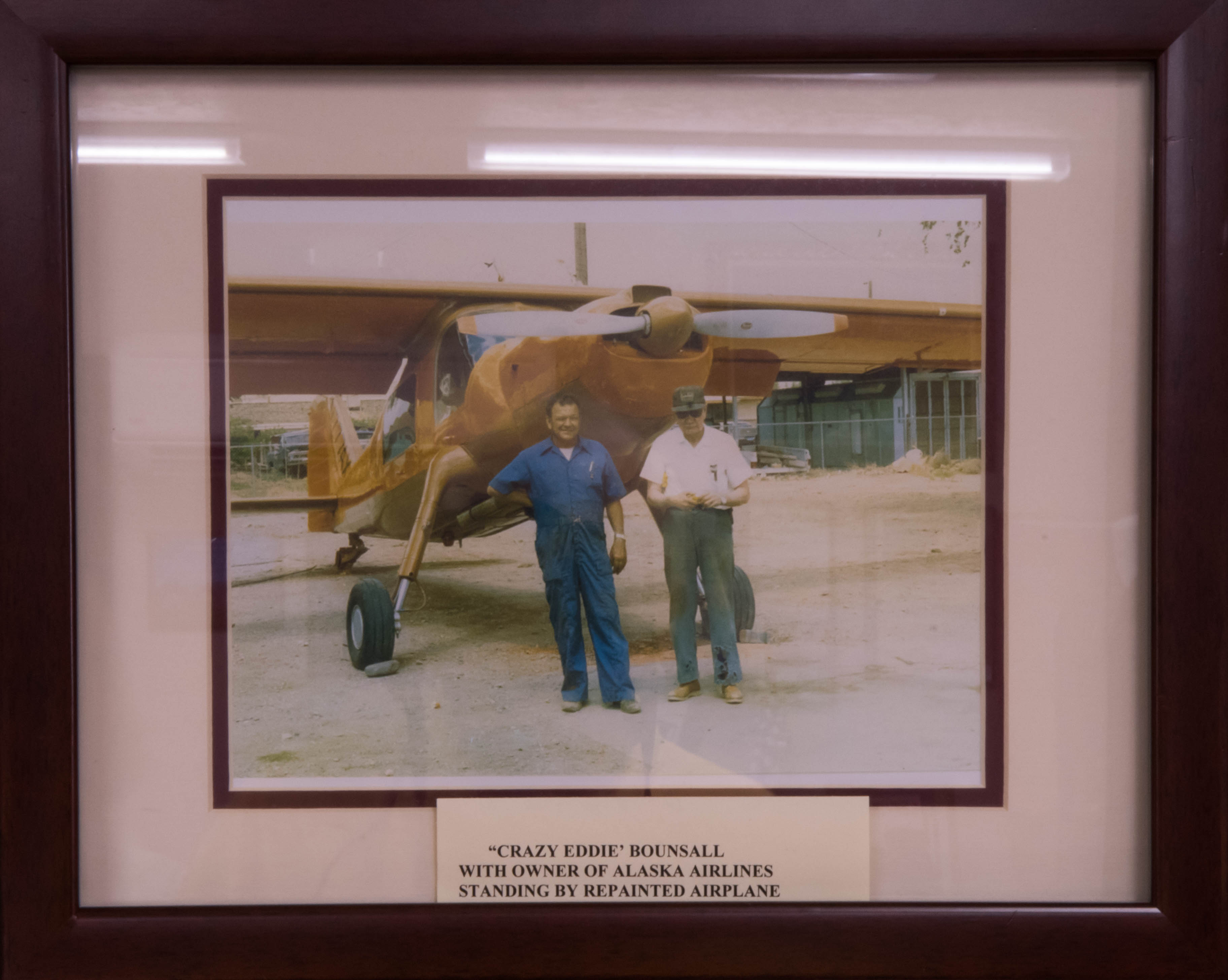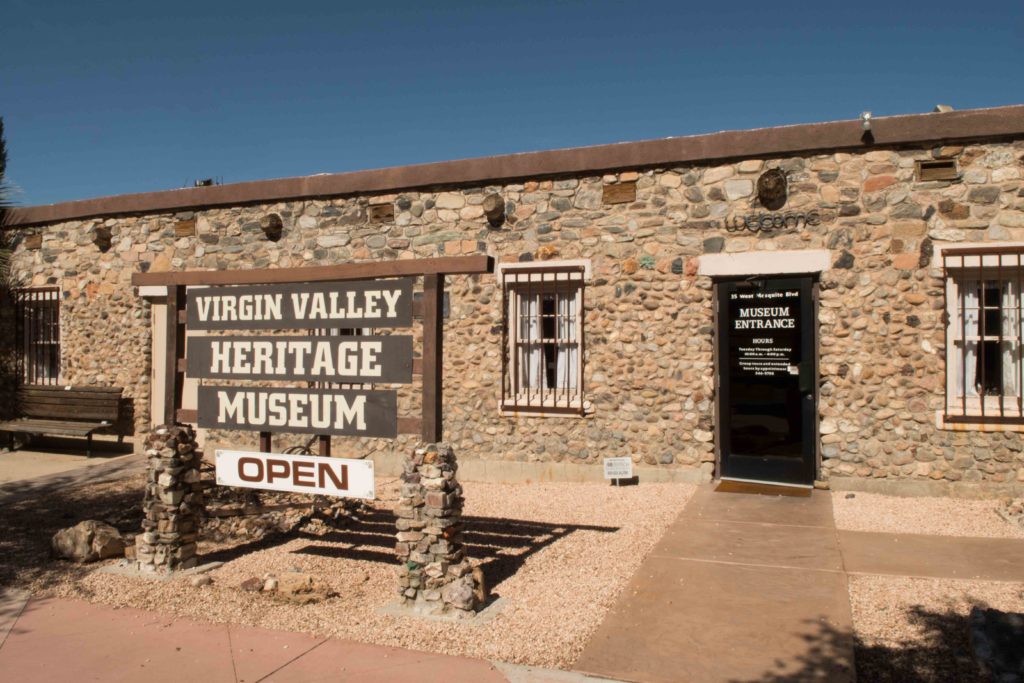
FEATURE — Of all of the four settlements of Virgin Valley, the town of Mesquite, Nevada, had the roughest time staying alive being daunted twice by flash floods that wiped out the community. Still, the settlers persisted. Years later, the area’s residents participated in the historic excavation and construction of Interstate 15 through the Virgin River Gorge.
“The third time was a charm,” said Elspeth Kuta, Virgin Valley Heritage Museum coordinator, of the early attempts to establish a community in Mesquite.
Littlefield and Beaver Dam, Arizona, Bunkerville and Mesquite, Nevada, make up the Virgin Valley. They share topography: a flat, narrow strip of land 6 miles long and 3 miles wide that hugs both sides of the Virgin River, a tributary of the Colorado River that runs through Utah, Arizona and Nevada to its terminus at Lake Mead.

The first settlers of the region were related by blood and bonded by religion and a combined fear and reverence for the river.
The first attempt to settle Mesquite lasted only two years, Kuta said.
By October 1881, cotton had successfully grown on the flat. Residents rejoiced as they threshed 110 bushels of barley in one day. Fifteen families – 71 inhabitants – had survived the first year, exuding optimism that the settlement would persist.
Spring comes early in the Virgin Valley, and it brought hope to the families as green emerged against a backdrop of desolate hills. These first settlers arrived penniless and familiar with hardship, yet they were filled with determination and hope.
They planted summer crops in May; but on June 28, 1882, a drenching rain saturated the sand hills, immersed the gullies and inundated the newly-dug canal.
“Five miles away in Bunkerville, the cry of ‘Flood! Flood!’ went from house to house,” Kuta said.
The flash flood lasted for four or five hours and damaged houses and merchandise but did not wash away the houses.

However, the portion of the Mesquite settlement across the river did not fare as well. Many residents were still living in wagons and tents, and they were forced to flee to the hillside caves.
The Mesquite settlers surveyed the canal and discovered it had washed away in 58 places. Every citizen, damp from rain and tears, worked to repair the canal, Kuta said.
The crop-curdling heat of August struck with fevers, filthy drinking water and temperatures reaching 140 degrees in the ditches. Discouragement took its toll. The exodus occurred after the settlers had given their all. They surrendered and everyone moved away except Lucius W. Peck and his wife.

The second attempt to settle Mesquite came about when Dudley Leavitt decided to move his family from the overcrowded Bunkerville to Mesquite, Kuta said. This was no small undertaking; he had five wives and over 50 children, making a bustling neighborhood in Mesquite again.
Of his children, Leavitt had at least 10 strapping sons whom he put to work laying a foundation of a dam. Peace in the valley was shattered by the newly-passed Edmunds Act of 1882, and the polygamists began a new chapter of their lives – evading the federal marshals sent to enforce the law.
Leavitt loved his wives and wouldn’t think of deserting them, so he taught his children to “know nothing.”
The Leavitts lived in Mesquite for four years when another catastrophic storm demolished the canal. The family deserted Mesquite and moved upstream a few miles.
In 1894, a group of six young families left Bunkerville for similar reasons to Leavitt and crossed the Virgin River to the abandoned Mesquite. They rebuilt the irrigation canals attempted by the first settlers and permanently established themselves as a successful town. They grew cotton and grapes and grazed cows for dairy products.

The automobile brought travelers and tourists. The entrepreneurial community opened motels and campgrounds and harvested enough food to feed them.
The people in Mesquite eventually hauled a nice load of cotton to the mill on Telegraph Street in Washington, Utah, and made enough money to build the Relief Society Building, which still stands on Willow Street in old downtown Mesquite.
Construction on the stone building that houses the Virgin Valley Heritage Museum today began in 1938. Roosevelt’s Civilian Conservation Corps plan gave jobs to local youth. The boys hauled rocks and began to layer stone walls.
However, Kuta said, the boys stacked rocks only to door height because government funds ran out and the war took away the boys. The community rallied and finished the walls using smaller stones.
This stone building served the community as a library for one year in 1940, and then the townsfolk decided to change the structure into a much needed medical facility. Nurse Bertha Howe, trained in New York, gathered $35 from each family to purchase medical supplies necessary to open the hospital. She and Dr. Gilbert set up and ran the only health care center in town until 1977.
For the next seven years, the building was used as a meeting place for Boy Scouts. In 1985, it became the Desert Valley Museum, later changing the name to Virgin Valley Heritage Museum in 2001.

Tuffy Ruth’s tales
Tuffy Ruth lives in Mesquite but grew up on a ranch as a cowboy and then began mining. He often visits the museum, which displays a variety of relics, artifacts and documents that tell the tale of Virgin Valley. Ruth is known as the problem solver, shovel runner, rock crusher, riot queller and many other titles.
Ruth remembers things. He relates how a highway was carved through the Virgin River Gorge and how a Mesquite mechanic gave the plane that carried the Shah of Iran to exile a tuneup and a paint job.
Ruth was part of the pioneering and excavation of the Virgin River Gorge. His company started at the top and worked down, excavating stone walls that dropped as much as 410 feet. Seven bridges were built beginning at the town of Beaver Dam.
“The fun part was blowing it up,” Ruth said during a Mesquite Days Founders Forum, reported in April 2015 by Mesquite Local News.
Ruth and the crews hauled 5 million yards of rock, he said, and in two years the gorge was ready for subgrade for 3.2 miles of road at a cost of $14 million.
“Compare that with the recent widening of one bridge for $32 million,” Ruth said.

The road took a decade to build. The 29-mile-long Arizona segment of Interstate 15 opened in 1973; at the time, it was the most expensive section of rural highway, per mile, constructed in the country.
And then there was the plane.
A desert-camouflaged plane droned overhead, Ruth said. The flight was scheduled for Mesquite and Old Highway 91 became a landing strip for the machine-gun laden, propeller plane that had conveyed the Shah of Iran out of his country into exile.
Ruth along with a state trooper stopped traffic while the plane landed and then escorted it as the pilot taxied down the main corridor of Old Downtown Mesquite. The owner of Alaska Airlines and his pilot stepped out of the aircraft. For a while, the plane resided close to the museum on Mesquite Boulevard until mechanic “Crazy” Eddie Bounsall removed the metal armor plating, rebuilt doors and gave the engine a tuneup.
“Eddie wasn’t really crazy,” Ruth said. “He might have been sly like a fox but smart. He built airplanes.”
Bounsall repainted the plane a peaceful color. About a month later the owner and pilot taxied the revamped plane down the boulevard and flew out of town.
Visiting Mesquite today
Today Mesquite is the center of the Virgin Valley and the Old Spanish Trail runs through it as Interstate 15. The main thoroughfare captures and reflects a deep rich pioneer heritage. Without the attempts of the tenacious first settlers, Mesquite probably wouldn’t exist.
Mesquite is home to casinos, sports resorts and recreational opportunities. It is resident to a large retirement population and is a popular waypoint for many travelers, being approximately halfway between Los Angeles and Salt Lake City, neatly planted on the I-15 corridor. In closer proximity are St. George, about 44 miles to the north, and Las Vegas, about 80 miles to the south.

Upcoming activities in and near Mesquite
- Backyard Pumpkin Party – Oct. 29, noon-4 p.m. | This event is held at the Virgin Valley Heritage Museum, 35 W. Mesquite Blvd., Mesquite. This is an annual event at the museum, open to all ages and free of charge. The pumpkin party provides an opportunity for pumpkin painting, games and working on seasonal crafts. The museum will provide all the necessary materials, including the pumpkins.
- Pomegranate Arts and Crafts Festival – Nov. 4-5, 9 a.m.-4 p.m. | This event is held at the Clark County Fairgrounds, 1301 W. Whipple St. in Logandale, 30 miles south of Mesquite.| The festival is organized by the Moapa Valley Art Guild and returns for its 20th year. Festival webpage.
- Historic walking tours – These begin at the Virgin Valley Heritage Museum, 35 W. Mesquite Blvd., Mesquite, and reveal the settlement first known as Mesquite Flats; a three-by-three-block town. Pick up a map at the museum, open Tuesday-Saturday, 10 a.m.-4 p.m., and envision what Mesquite was like in early 1900s.
- Mesquite Fine Art Gallery and Gift Shop – Open Monday-Saturday, 10 a.m.-4 p.m. | The gallery is located at 15 W. Mesquite Blvd., Mesquite. | This gallery is a good way to indulge artistic interests. Student’s paintings, pottery and sculptures are displayed and available for purchase.
Resources
- Virgin Valley Heritage Museum | Open Tuesday-Saturday, 10 a.m.-4 p.m. | 35 W. Mesquite Blvd., Mesquite | Telephone 702-346-5295 | Facebook page | website
- Mesquite Chamber of Commerce calendar webpage (more regional activities)and on the Virgin Valley Heritage Museum .
Click on photo to enlarge it, then use your left-right arrow keys to cycle through the gallery.
This photo dated Jan. 13, 2007, shows the Virgin Valley with the Virgin River south of Mesquite, Nevada | Photo by Stan Shebs, St. George News The Relief Society Building was built in 1929. Historic walking tour in Mesquite, Nevada, Oct. 18, 2016 | Photo by Jim Lillywhite, St. George News Old stone home on historic walking tour, Mesquite, Nevada, Oct. 18, 2016 | Photo by Jim Lillywhite, St. George News Virgin Valley Heritage Museum, Mesquite, Nevada, Oct. 18, 2016 | Photo by Jim Lillywhite, St. George News Stone sorter used by early settlers of the Virgin Valley, on display at the Virgin Valley Heritage Museum, Mesquite, Nevada, Oct. 18, 2016 | Photo by Jim Lillywhite, St. George News Slot machine and cash register artifacts on display at the Virgin Valley Heritage Museum, Mesquite, Nevada, Oct. 18, 2016 | Photo by Jim Lillywhite, St. George News Wedding dress of Francis Vilate Hughes, married Aug. 19, 1912, on display at the Virgin Valley Heritage Museum, Mesquite, Nevada, Oct. 18, 2016
| Photo by Jim Lillywhite, St. George News Still used by early settlers in Mesquite, on display at the Virgin Valley Heritage Museum, Mesquite, Nevada, Oct. 18, 2016
| Photo by Jim Lillywhite, St. George News Cotton growing at the Virgin Valley Heritage Museum, Mesquite, Nevada, Oct. 18, 2016 | Photo by Jim Lillywhite, St. George News A sample of cotton growing at the Virgin Valley Heritage Museum, Mesquite, Nevada, Oct. 18, 2016 | Photo by Jim Lillywhite, St. George News Old wagon on display at Virgin Valley Heritage Museum, Mesquite, Nevada, Oct. 18, 2016 | Photo by Jim Lillywhite, St. George News Cream separator used by early settlers, on display at the Virgin Valley Heritage Museum, Mesquite, Nevada, Oct. 18, 2016 | Photo by Jim Lillywhite, St. George News Friendship quilts dating to 1865, on display at the Virgin Valley Heritage Museum, Mesquite, Nevada, Oct. 18, 2016 | Photo by Jim Lillywhite, St. George News Grape stem remover used by early settlers, on display at the Virgin Valley Heritage Museum, Mesquite, Nevada, Oct. 18, 2016 | Photo by Jim Lillywhite, St. George News Interstate 15 under construction through the Virgin River Gorge. When the 29-mile-long Arizona segment of I-15 opened in 1973, the Virgin River Gorge passage was the most expensive section of rural highway, per mile, constructed in the country. Photo date not specified | Photo courtesy of the Washington County Historical Society, Utah; St. George News| This photo shows the plane that served as the Shah of Iran's escape plane when he went into exile. The plane later landed for repairs in Mesquite circa 1979; this photo hangs in the Virgin Valley Heritage Museum, Mesquite, Nevada | Photo courtesy of Virgin Valley Heritage Museum, St. George News















About the series “Days”
“Days” is a series with St. George News contributor, feature writer and photographer Kathleen Lillywhite. She said:
I write my stories for people who say, ‘What is there to do around St. George?’ and for new folks just moving into this area.
See prior features in the series:
- Branding day; today’s cowboy
- Fishing day; the B-4-Reel and a really bright trout at Otter Creek
- History day; Virgin Town walkabout, once ‘a dreadful place’
- Way-stop day; take a step back in time at Cove Fort
- Hot hiking day; Fruita, an oasis in the desert of Capitol Reef
- Railroad day; Caliente is born, dies and revives
- Rodeo day; a hometown girl’s journey to the crown
- Mining town day; Pioche, the roughest town in the Wild West
- Ancients day; 100 hands of Moqui at Fremont Indian State Park
- Homestead day; finding treasure at Frontier Homestead State Park Museum
Email: [email protected] | [email protected]
Twitter: @STGnews
Copyright St. George News, SaintGeorgeUtah.com LLC, 2016, all rights reserved.


Well done! Another cool read with loads of interesting history that might otherwise be lost forever.